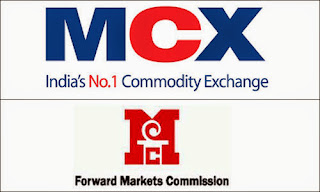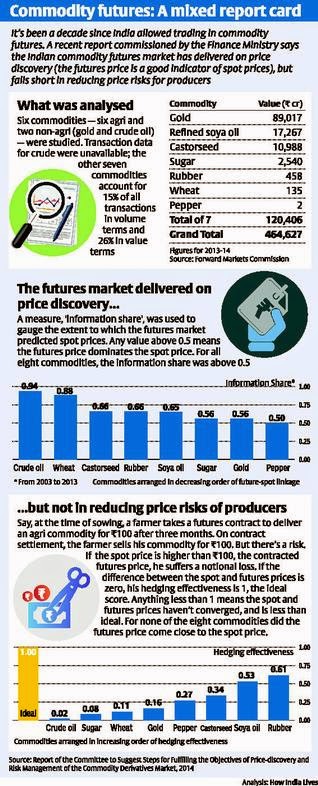Government working on revised Forward Contract Regulation Bill
 The Government is considering empowering commodity market regulator Forward Market Commission, with search and seizure powers, similar to that of SEBI. This will be part of proposed Forward Contract Regulation Act (FCRA) Amendment Bill.
The Government is considering empowering commodity market regulator Forward Market Commission, with search and seizure powers, similar to that of SEBI. This will be part of proposed Forward Contract Regulation Act (FCRA) Amendment Bill.
 The Government is considering empowering commodity market regulator Forward Market Commission, with search and seizure powers, similar to that of SEBI. This will be part of proposed Forward Contract Regulation Act (FCRA) Amendment Bill.
The Government is considering empowering commodity market regulator Forward Market Commission, with search and seizure powers, similar to that of SEBI. This will be part of proposed Forward Contract Regulation Act (FCRA) Amendment Bill.
“The proposal related to power for search and seizure is based on the suggestions given by the FMC. It is expected to be part of the Bill which is being redrafted,” a senior Government official said.
The Bill, once approved by the Cabinet, will be introduced in Parliament. The regulator was asked to work on the new Bill after which it sent its suggestions to the Finance Ministry late last week.
Though the Bill was introduced in the previous Lok Sabha, it lapsed as the UPA Government failed to get it passed. The earlier Bill was tabled by the Consumer Affairs Ministry, but now it will be introduced by the Finance Ministry as FMC and Commodity trading come under it.
The revised draft will be silent on regulating spot exchanges. FMC is empowered to regulate futures trading. However, last year, the Government empowered the FMC to supervise settlement of all outstanding one day forward contracts at the National Spot Exchange Ltd (NSEL) and also authorised it to issue any order or direction in the wake of Rs. 5,600-crore scam. Earlier, there were three spot exchanges, NSEL, N Spot and National Multi Commodity Exchange. But, now only N Spot is functional.
The Bill aims to make provision for investigation, enforcement and penalty in case of contravention of the provisions of the Act. It also aims to give fresh powers to FMC such as levying fees and registration of intermediaries. There is also talk about allowing banks and foreign institutional investors in commodity trading. This will help deepen the market. The Bill also has provision for corporatisation and demutualisation of the existing commodities exchanges and setting up of a separate Clearing Corporation.
Beside, empowerment, enactment of the Bill will facilitate introduction of new trading product such as option. Option is a derivative product, like futures, but with some difference. Option gives right, but not the obligation, to buy or sell a specific commodity at a certain price, while future prescribes obligation for the buyer to buy and for seller to sell at a specific future date.






